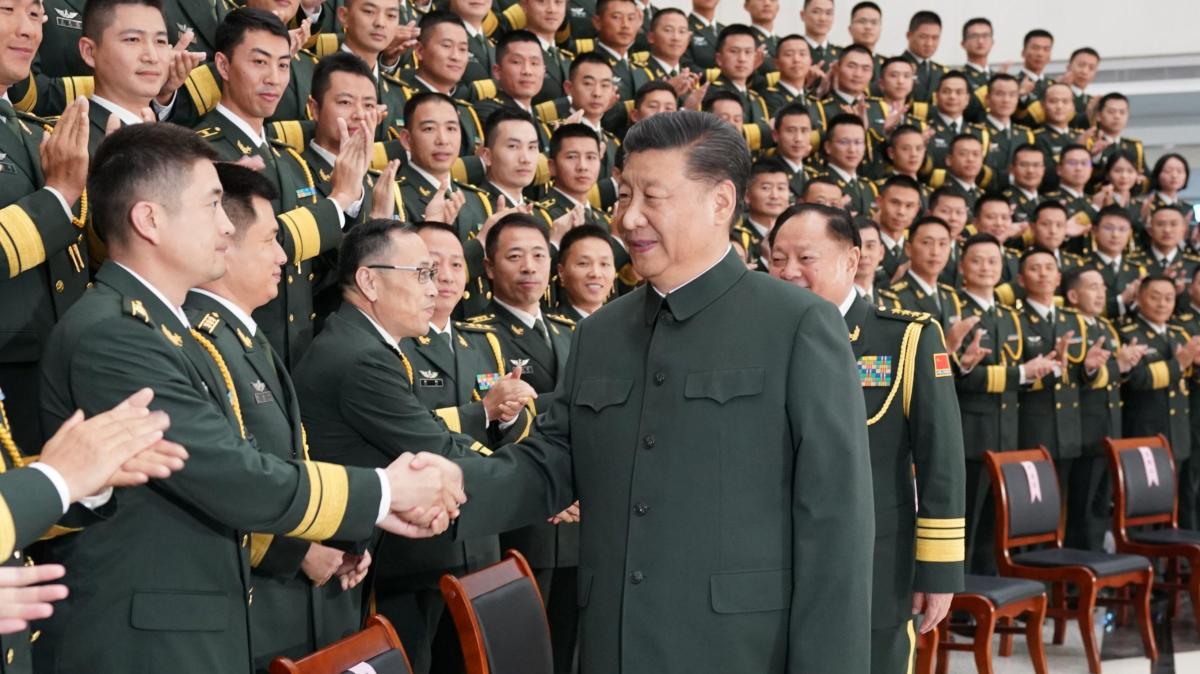How China turned itself into a player on the world stage
The Times, December 26 2019
When war broke out in Yemen in 2015, a Chinese frigate docked at the port of Aden and, under armed guard, evacuated hundreds of Chinese nationals to Djibouti.
The successful military operation was a sign of how far China had come: it was once a backwater struggling to feed its population, let alone able to carry out a complex rescue mission for its citizens living thousands of miles away.
“When the ship drew near, with the loudspeaker saying, ‘Chinese compatriots, we’ve come to take you home’, everyone cheered ‘Long live China’,” Zhang Zuohe, who had been working in Yemen for a state-run company, recalled.
The operation inspired two blockbusters, one of which, Wolf Warrior 2, which raked in $608.6 million at the box office, is the country’s highest-grossing film.
Seven decades after its founding, the People’s Republic of China has become a tightly controlled economic powerhouse with expansive military influence and growing technological prowess.
President Xi has vowed that his country will become a “global leader” by 2050. “The greatest dream for the Chinese nation is to realise its great rejuvenation,” Mr Xi said in a speech in October marking the 70th anniversary of Communist Party rule.
Though China’s economic expansion has slowed this year, it is projected to overtake the United States in the next decade to become the world’s largest economy.
Mr Xi, 66, also hopes to reshape the world order with the help of the controversial Belt and Road Initiative, connecting China with Africa and Europe through land and maritime networks, increasing its geopolitical clout as well as trade and economic growth.
When in 1996 a group of nationalist authors wrote a bestselling book, China Can Say No, the title seemed like wishful thinking. Not any more. This year the Chinese president refused to yield to pressure from Washington during a tit-for-tat trade war, though China did strike a compromise this month as the US threatened to impose more punitive tariffs.
Not all development has been positive. People in China are no freer than they were 10 years ago. State control, if anything, has increased. Witness the detention of more than a million Uighur Muslims in “re-education camps”. And since 2012 China has experimented with a hi-tech social credit system that has echoes of the Communist Party’s dossier system, which kept a file on every citizen.

A band of the People’s Liberation Army marks the 70th anniversary of the founding of the People’s Republic of China in a ceremony in Beijing in OctoberGETTY IMAGES
Surveillance is pervasive. Using big data, artificial intelligence and high-resolution surveillance, this social credit scoring assesses all aspects of a person’s life: whether they support the ruling party, conserve energy, sign up as an organ donor, pay bills on time and follow traffic rules.
Anyone on the blacklist will have restrictions placed on their travel, access to loans, jobs and their children’s education. Some could end up in prison — Chinese courts boast a nearly 100 per cent conviction rate.
In the economic domain, though, China’s achievements are undeniable. Decades of robust growth have transformed China from a poor to a middle-income country. Its gross domestic production reached $13 trillion in 2017, compared with the US’s $20 trillion. China’s GDP was about one tenth that of the United States in 1996. Life expectancy has risen from 35 in 1949 to 77 today.

Now China has the third most powerful military force after the United States and Russia. The navy recently commissioned its first homemade carrier, making a fleet of two aircraft carriers. A third is being built, equipped with advanced electromagnetic catapults to launch fighter jets.
In October Beijing put on a show of strength when 580 pieces of military equipment, including drones and missiles, rolled down the Avenue of Eternal Peace to mark the Communist Party’s 70-year rule. Among them were the DF-41, a nuclear-capable missile that can reach the United States in 30 minutes.
This year China became the first country to land on the far side of the moon, and it has built the world’s largest radio telescope — the Five hundred-metre-wide Aperture Spherical radio Telescope (FAST).
China has also created numerous “super projects”, including the world’s most expansive high-speed railway network and the longest sea crossing, the 55km Hong Kong-Zhuhai-Macau Bridge.
“In the past, we did what our equipment allowed but now we [can] build whatever we need to do what we want to do,” Lin Ming, the bridge’s chief engineer, said.
Link: https://www.thetimes.co.uk/article/how-china-turned-itself-into-a-player-on-the-world-stage-jmw0cx5jv


